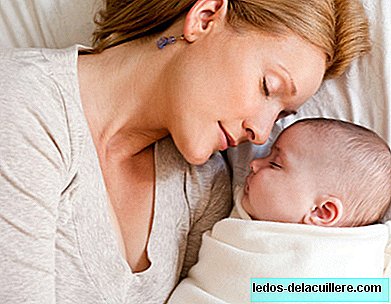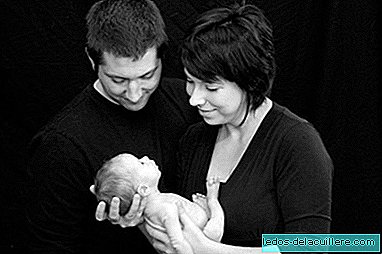
'If the problems of unemployment, job insecurity, work and family reconciliation, and gender inequalities are not successfully addressed, the prognosis is simple: the very low fertility rate will remain indefinitely'. Only if private and collective responsibilities are redefined, or, in other words, the costs of children are redistributed between family, society and State, and also equally between both parents, is it likely that the difference between the number of children desired and real is shrinking.
What you have just read is part of the conclusions of the Report in which La Caixa analyzes the peculiarities of late and low birth rates in Spain. And the trend of the only child has been consolidated, because three out of ten Spaniards grow up without brothers
I like to talk about 'difference between number of desired and real children', although for many fathers and mothers it is painful to recognize that they would want more children than they have. And as for our situation as a country, it should be noted that Spain is at the tail of Europe in birth (1.3 children per woman, on average); Of course, unlike countries with similar birth rates (Italy or Germany), very few Spaniards choose not to have children. If we look back we realize that a few decades ago families were more numerous, but it is not just an impression of ours because In Spain, the progression to the second and third children has become less and less frequent. Among women who had a child, only 68% went on to have the second, and among those who had two, only 21% went on to have the third.
In some countries, such as Sweden, the number of children has been surprisingly stable for all generations born in the twentieth century. In Spain, on the other hand, while women born in 1900 had an average of 3.4 children, those born in 1965 - the last generation that had completed their reproductive cycle in 2011 - had an average of 1.6 children throughout of their life. Further, a recent forecast indicates that the final number of children of the generation of Spanish born in 1975 will remain very low (1.4 children).
Why is the tendency to have only one child maintained and consolidated?
Late motherhood
Age in which more births are concentrated, it is 32-34 years old, and births among women over 35 now represent 18% of the total. Although the fertility rate of women over 40 remains low, the proportion of first births of mothers over 40 has multiplied by more than 4: from 0.9% in 1996 it has increased to 3.9 % in 2011.
The postponement of motherhood was a phenomenon initially led by women of high educational level. But in Spain the delay has extended to all social strata and is increasingly widespread: in 2010, the average age of the birth of the first child was 32.9 years for women with university studies, 30.8 for those who had completed the second cycle of secondary studies and 28.2 for those who had the first cycle.
How does it affect the working life of parents?
The incorporation of women has been accompanied by a continuous decline in fertility due to the difficult reconciliation of work and family roles; but in the last decade, this trend had been slowed down, because the fact of having two salaries at home also made it easier to expand the family. In fact, in countries with the highest birth rate, so is the female labor participation rate. In 2012, 51% of Spanish women between 16 and 64 years worked, compared to 60% in France, 65% in the United Kingdom, 68% in Germany and 72% in Sweden (Eurostat, 2013) .
However, the difficult economic situation and unemployment levels that have skyrocketed in recent years, from 17% in the eighties to 26% in 2013, and which have particularly affected young adults, have caused a new factor of risk in motherhood. The fact that one or both members of a couple is unemployed currently contributes to stopping the birth rate
But women who work do not have it easy either because the difficulties of reconciling work and family life remain in families where the two members of the couple work. In this sector are women with university studies, a third of the total female population, which, contrary to the usual belief, is a crucial collective for the birth rate of our country, according to the report. Therefore, experts propose the implementation of policies and resources to facilitate the maternity of working women.
The report also clarifies that the behavior of de facto fertility couples is similar to those of law, since cohabitation is already a very common match option. So, birth among cohabiting families accounts for 23 percent of all births.
Among the conclusions experts indicate that children they should be recognized as a social good and, therefore, the costs of having them should be shared by all. Regardless of whether they have children or not, the authors of the study consider that everyone wins if the children of a given society grow up healthy, well fed and well educated, because we must not forget that today's children They will pay tomorrow's pensions.
A series of public policies with a positive influence on fertility have been identified, around which there is a broad consensus among demographers: reconciliation policies for family and work life (duration and organization of working hours, time flexibility and working conditions), welfare policies (prioritizing investment in nursery schools from 0 to 3 years old) and policies that promote gender equality. It is important to recognize that women's commitment to their training and professional career is irreversible, so society must adapt to that reality.
Analyzing other countries, two possible ways for fertility rates to be moderately high are detected: the Nordic model, based on public support for the double-paid family and family-friendly policies that facilitate the reconciliation of work and family life to mothers and fathers, and the Anglo-Saxon model, based on the persistence of high fertility niches, which in Spain, as the study shows, practically do not exist
Finally, I know that the decisions as to at what age to be parents (something that in my opinion we rationalize perhaps in excess), and what number of children to have, correspond to each couple; but without any doubt, the data presented in this report are intended for reflection.












